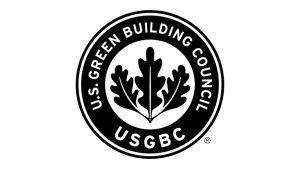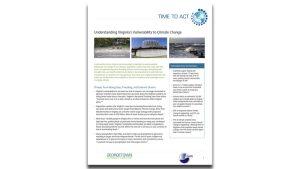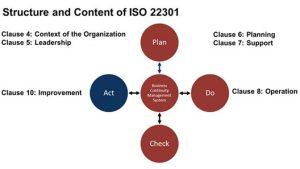Design decisions for buildings and communities are critical to efforts to increase local and regional resiliency. Building designers — of residential, institutional, and commercial structures — should strive to incorporate passive and active survivability concepts into new and renovated structures.
Community planners and developers need to incorporate concepts that increase the capacity to maintain transportation flow, strategies to handle water management, and infrastructure approaches that will withstand a variety of risks.

U.S. Green Building Council
The U.S. Green Building Council (USGBC) believes we must continuously look over the horizon to foreseeable and unforeseeable crises and see what plans are on the table, what preparations need to be made and what assets are in place. And when these tragedies do occur, we need to deploy the resources and assistance to help communities recover smarter, greener and better.

Understanding Virginia’s Vulnerability to Climate Change
This report from the Georgetown Climate Center and Old Dominion University’s Mitigation & Adaptation Research Institute touches on two threats to Virginia’s communities: rising seas, flooding, and extreme storms; and threats from extreme heat.

USACE Engineering with Nature
The U.S. Army Corps of Engineers (USACE) Engineering With Nature® (EWN) Initiative enables more sustainable delivery of economic, social, and environmental benefits associated with infrastructure.

Walking The Talk: Business Resilience Planning at Facility Engineering Associates
Maureen Roskoski of Facility Engineering Associates describes how FEA committed to pursue certification under the ISO 22301 Business Continuity Management Systems standard.

U.S. Green Building Council
The U.S. Green Building Council (USGBC) believes we must continuously look over the horizon to foreseeable and unforeseeable crises and see what plans are on the table, what preparations need to be made and what assets are in place. And when these tragedies do occur, we need to deploy the resources and assistance to help communities recover smarter, greener and better.

Understanding Virginia’s Vulnerability to Climate Change
This report from the Georgetown Climate Center and Old Dominion University’s Mitigation & Adaptation Research Institute touches on two threats to Virginia’s communities: rising seas, flooding, and extreme storms; and threats from extreme heat.

USACE Engineering with Nature
The U.S. Army Corps of Engineers (USACE) Engineering With Nature® (EWN) Initiative enables more sustainable delivery of economic, social, and environmental benefits associated with infrastructure.

Walking The Talk: Business Resilience Planning at Facility Engineering Associates
Maureen Roskoski of Facility Engineering Associates describes how FEA committed to pursue certification under the ISO 22301 Business Continuity Management Systems standard.
